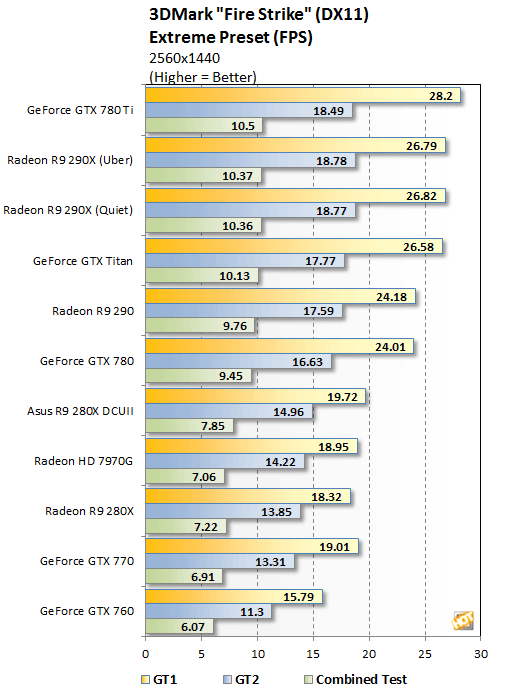NVIDIA GeForce GTX 780 Ti: Taking GK110 To The Max
3DMark Fire Strike Test
|
|
|
|
|
Fire Strike has two benchmark modes: Normal mode runs in 1920x1080, while Extreme mode targets 2560x1440. GPU target frame buffer utilization for normal mode is 1GB and the benchmark uses tessellation, ambient occlusion, volume illumination, and a medium-quality depth of field filter. The more taxing Extreme mode targets 1.5GB of frame buffer memory and increases detail levels across the board. Extreme mode is explicitly designed for CrossFire / SLI systems. GT 1 focuses on geometry and illumination, with over 100 shadow casting spot lights, 140 non-shadow casting point lights, and 3.9 million vertices calculated for tessellation per frame. And 80 million pixels are processed per frame. GT2 emphasizes particles and GPU simulations. Tessellation volume is reduced to 2.6 million vertices and the number of pixels processed per frame rises to 170 million. |


The GeForce GTX 780 Ti also took the pole position in the 3DMark Fire Strike benchmark. The card's increased clocks, additional cores, and ultra fast memory propelled it past the GTX Titan and allowed it to overtake the Radeon R9 290X as well. The detla separating the 780 Ti and 290X is relatively small, but the 780 Ti pulled off the victory here nonetheless.







